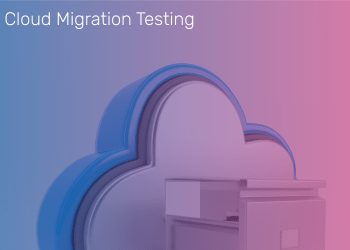Testing is an essential part of the software development lifecycle. It ensures the elimination of bugs, addresses performance issues, and checks for expected functionalities, security, and other important aspects. The efficiency of the testing process is what determines the quality of the software application delivered to a customer, and for this reason, it is one of the most important stages of the development process.
When it comes to testing, there are two ways to go about it – manual and automated. There is often much confusion over which is the optimal method for ensuring maximum quality and minimum error with minimum effort. There is also the question of feasibility with regard to time, cost, and other available resources. So, which one should you choose?
Manual Testing
Manual testing is the conventional method of software testing undertaken by quality analysts or testers without the use of tools or scripts. The process of executing test cases and generating test reports are all carried out manually in this method. Manual testing is time-consuming, requires the constant and complete attention of one or more individuals, and, despite this, is prone to human error. It is also challenging to carry out manual testing when frequent and repetitive testing is required.
Despite these obvious drawbacks, however, manual testing is still essential to testing in certain scenarios. Field testing and “monkey testing” of apps in mobile and wearable devices cannot be automated and needs manual testing. When it comes to testing for the user-friendliness of particular software, again, the scope of automated testing is limited. Only manual testing and observed feedback from quality analysts are suited for such assessments.
Automated Testing
Automated testing, as the name suggests, involves the automated execution of pre-scripted test cases. In this method of software testing, testers employ specialized tools to write code and develop test scripts. Following this step, the tests themselves are run automatically. The actual results of the tests are also compared automatically to the expected results.
Automated testing is best suited in scenarios that repetitive testing. This is because it requires only the initial effort of developing the test cases. After this, it can simply be allowed to run, as many times as needed. Automated testing is also several times faster than manual testing.
Which one should you choose?
At CloudNow, we believe that both manual and automated testing are essential. We automate most tests that fall within the scope of automation to save time and improve accuracy. At the same time, we acknowledge the value of manual intervention when it comes to testing certain aspects of the product.
Manual testing is best suited for:
- Exploratory Testing: Performed by domain experts, this test is intended to “explore” the functionalities of an application without knowing the requirements for which it was developed. They will then provide insights to improve the application based on their logical analysis, creativity, and experience.
- Usability Testing: The purpose of usability testing is to ensure that the application is intuitive, user-friendly, and can be easily navigated and used by the intended end-users. This type of test cannot be automated and has to be manually carried out as it requires human observation.
- Ad-hoc Testing: An informal type of testing method, it involves the testing of random aspects of the application. It doesn’t utilize any test cases or any business requirement document.
Automated testing is best suited for:
- Regression Testing: When a pre-tested program is being tested again after modification, it is known as regression testing. It is best to automate this type of testing as it will involve frequent code changes and will require faster delivery.
- Load Testing: Load testing checks the application or system for its ability to handle heavy loads – sudden increase in number of users or transactions. This type of testing is used to check if the system slows down or changes behavior with fluctuating traffic.
- Performance Testing: Used to determine the speed, scalability, stability, throughput, response times, resource utilization, and other performance aspects of an application. It includes the simulation of thousands of concurrent users and, therefore, has to be automated.
The right mix of manual and automated testing is important for optimizing the various aspects of the application while keeping in mind factors such as cost, time, and human resources. That’s why, at CloudNow, we offer testing as a service – both as a standalone service and as part of our holistic project development services.
Interested in our service? Get in touch with us today!










